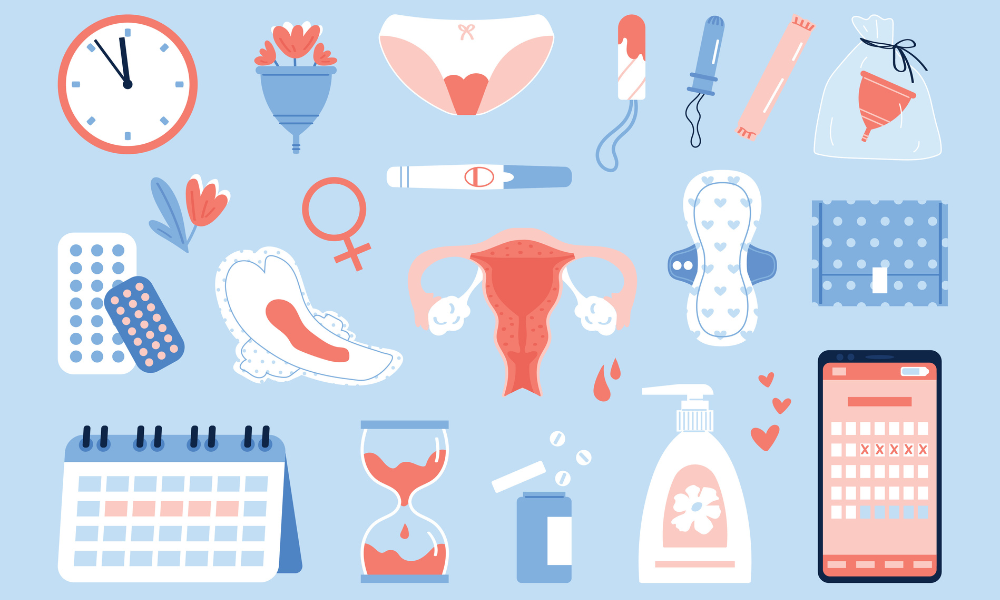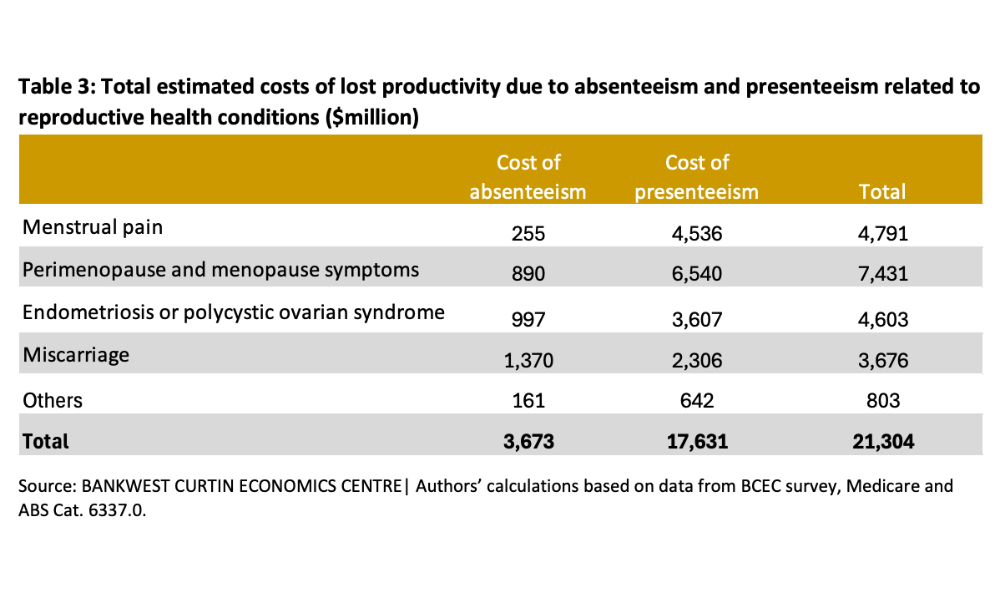
Lack of reproductive health leave costing economy $21.3 billion: report

The Australian government is being encouraged to introduce universal reproductive health leave after a new study revealed the multi-million economic cost of reproductive health conditions.
A new report from the Bankwest Curtin Economics Centre found that lost productivity resulting from absenteeism and presenteeism related to reproductive health conditions could reach $21.3 billion a year.
"This report confirms that reproductive health leave is not a luxury, it's a necessity," said Jacqueline King, Queensland Council of Unions General Secretary, in a statement.

Unions across Australia have long campaigned for reproductive health leave, which they said would strongly benefit women in the workforce.
The Queensland government introduced last year 10 days of paid leave for reproductive health care for all employees of government-owned corporations, Queensland Rail, and Seqwater.
But King noted that unless reproductive health leave becomes a National Employment Standard, many more workers will continue to miss out.
"That's why we're continuing our campaign for reproductive health leave for every worker in Australia," King said.
Introducing 12 days of reproductive health leave would also only cost $1.7 billion, which is equivalent to only $140 per year per employed worker.
"Paid reproductive health leave won't eradicate these conditions, but it will support workers affected by health challenges and bring far greater equity into the workforce, at a fraction of the costs employers are currently experiencing from lost productivity," said Dr. Silvia Salazar, Bankwest Curtin Economics Centre Senior Research Fellow, in a statement.
The push for a universal reproductive health leave in Australia comes as the report found that menstrual pain affects more than half of working women in Australia.

Despite experiencing reproductive health conditions, the report found that 84.3% of them still continue to work, with their reasons being:
Not wanting their manager or colleagues to know (44.8%)
Saving the leave for something else (40.6%)
Discomfort wasn't significant enough to take leave (32.6%)
Didn't have enough sick leave (29.1%)
Had to take unpaid leave and couldn't afford it (27.1%)
Kate Marshall, Health Services Union National Senior Assistant Secretary, said introducing reproductive health leave policy will largely benefit women.
"This is not sick leave. Work can be extremely difficult when you are dealing with pain or reproductive conditions," Marshall said in a statement.
"By rolling out a universal entitlement of 12 days a year, we will give all workers, particularly women, dignity and agency to be a part of a workforce that doesn't currently reflect our needs."